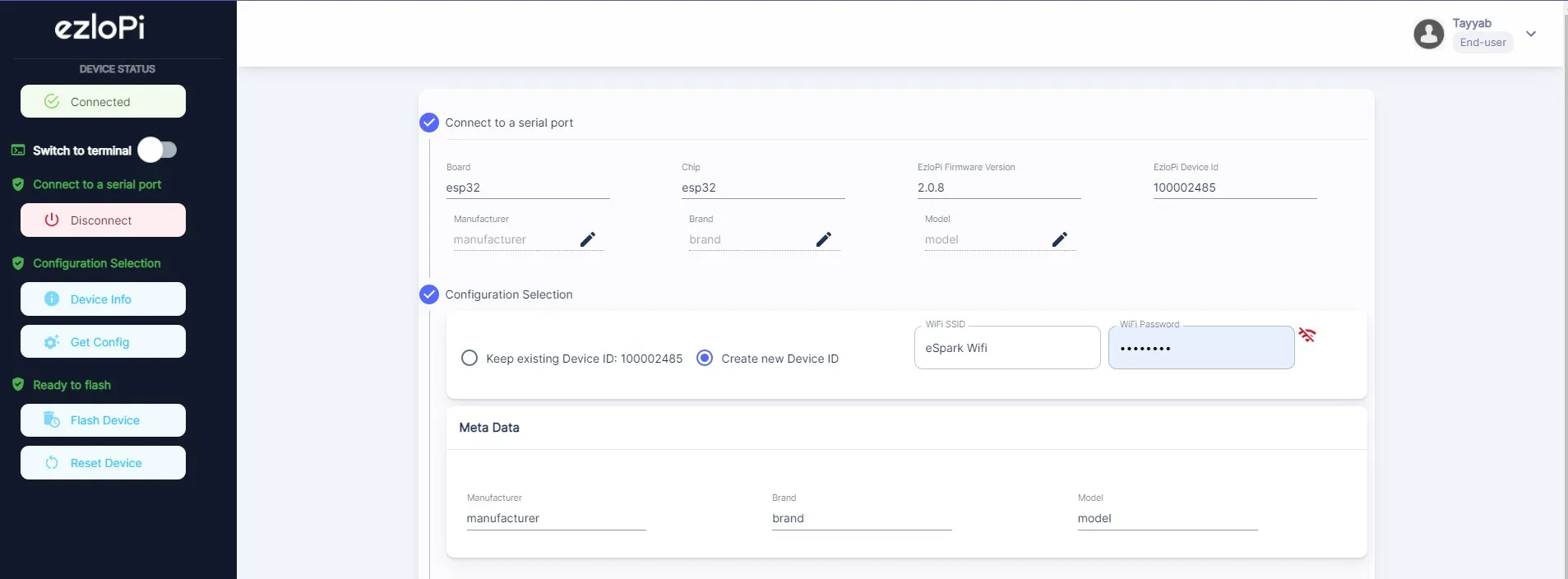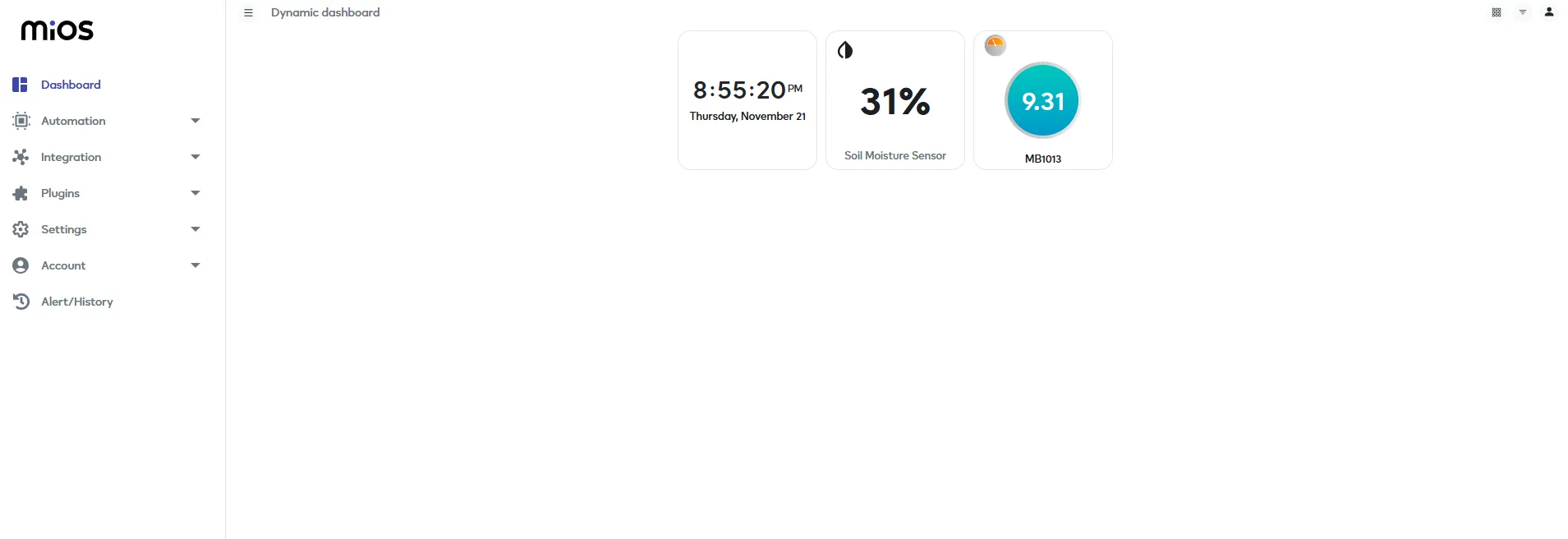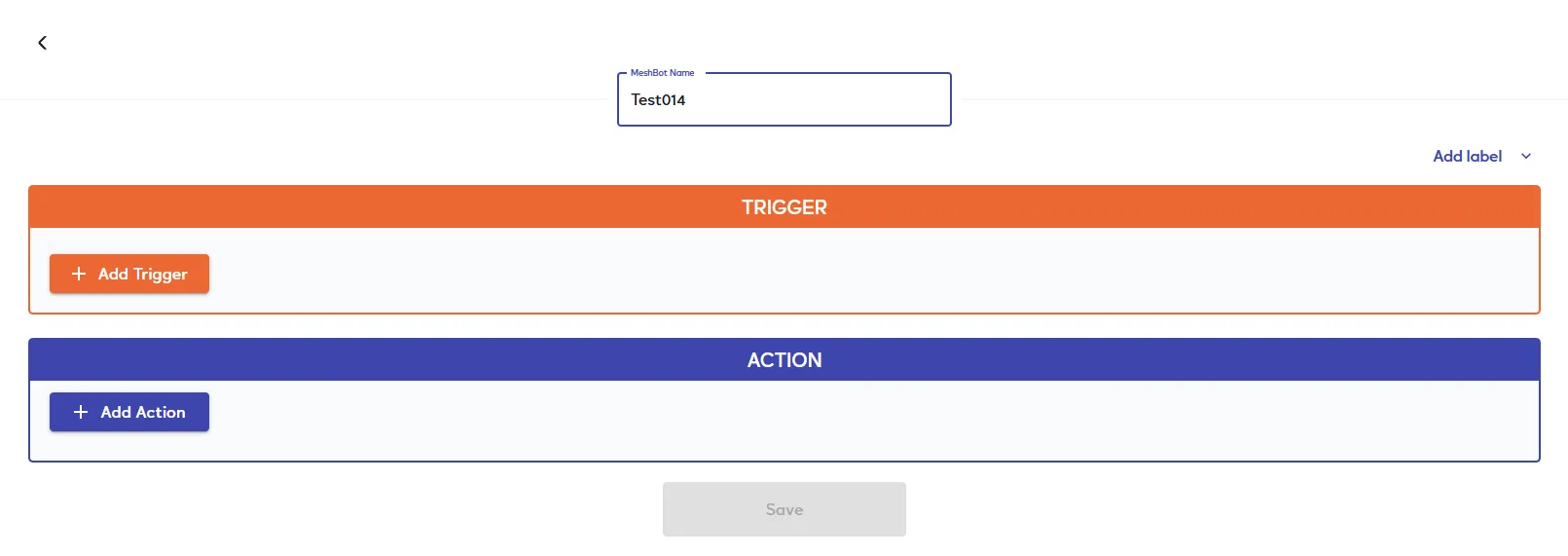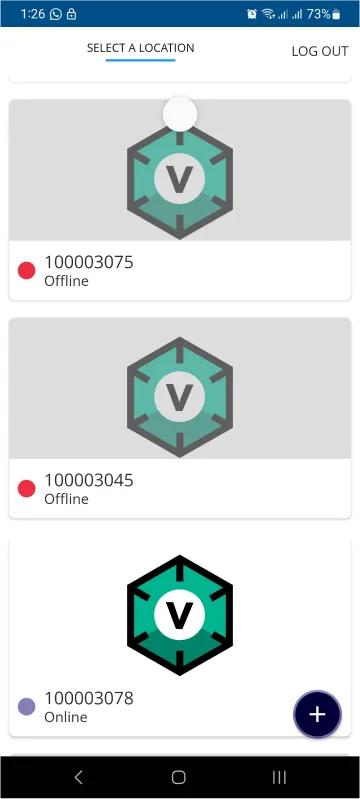
Solution for every problem!
Smart irrigation monitoring system
The EzloPi smart devices provide automation through simple, customizable use with our open-source EzloPi platform, making daily life easier and improving human-machine interactions.
Before moving into this example, it is very important to know about the device registration, provisioning and converting the ESP32 device into an EzloPi device along with knowledge of Web Flasher, MiOS Mobile Application for Android/iOS and the MiOS Web Application.
1. About this example
The following project integrates the MB1013 sonar sensor module and FC-28 soil moisture sensor module with the EzloPi device to optimize water usage. The sonar sensor monitors water levels in the reservoir, while the soil moisture sensor determines the soil's hydration status. The EzloPi device processes these sensor inputs and activates a pump or valve for irrigation when necessary, ensuring efficient water management. This system promotes sustainable agricultural practices by preventing overwatering and conserving resources.
3. Circuit Diagram & Interface
The following components are required for interfacing with the EzloPi device:
- ESP32 as an EzloPi smart device.
- MB1013 sonar sensor module.
- FC-28 soil moisture sensor module with LM393 comparator IC module.
The wiring diagram of ESP32 30 pin is represented as follows:


The following connections are made in order to complete the circuit setup.
From ESP32 to the MB1013 sonar sensor:
| ESP32 | MB1013 |
| 3V3 | VCC |
| GND | GND |
| D16 (RX) | Tx |
| D17 (TX) | Rx |
From ESP32 to the LM393 comparator module:
| ESP32 | LM393 comparator module |
| 3V3 | VCC |
| GND | GND |
| D3 | A0 |
From the LM393 module to the FC-28 Soil moisture sensor:
| LM393 Comparator Module | FC-28 |
| + ve pin | POS |
| - ve pin | NEG |
4. Interfacing the MB1013 sonar sensor & FC-28 soil moisture sensor using the EzloPi Web Flasher
1. Set up your device/hardware by visiting config.ezlopi.com

- Log in using the credentials which you just set earlier while signing up.

- Now, click on the Connect Device button and a pop-up window will appear.

- Now, select COM Port to which your ESP32 device is connected. In our case, the COM3 port is used.
Click Connect

- If you are new to this and it's your first time configuring, select Create new Device ID. Enter Wifi SSID and Wifi Password.
- In the Device Configuration, tab click on UART.

- A UART window will be opened for inputting the following parameters:
- Set a Device name of your choosing. In our case, we set it to Sonar Sensor.
- Set Device subtype to MB1013.
- Set GPIO RX to 16.
- Set GPIO TX to 17.
- Set Baud Rate to 9600.
- Then Click Apply Button.
- Again, In the Device Configuration, tab click on Analog Output

- An Analog Input window will be opened for inputting the following parameters:
- Set a Device name of your choosing. In our case, we set it to the Soil Moisture Sensor.
- Set Device Subtype to FC-28 Soil Moisture Sensor.
- Set the ADC input pin to 33.
- Set the Resolution to 10-bit.
- Then Click Apply Button.
- After clicking the apply button you can see a table of your setting in the device configuration tab.
- Press the Flash Device button.
- A window will appear on the bottom right side of the screen displaying “Please press BOOT button while flashing begins.”

- Hold the BOOT button down until the next window appears on the bottom right side of the screen which says “Installation prepared. Please release the boot button now.”

- Release the BOOT button from your ESP32 when this pop-up on the bottom right window appears.

- After some time, a popup will appear saying Device Flashed Successfully! This means that your device has been set up successfully.
5. MiOS Web Dashboard
- After configuring the controller with the EzloPi web flasher, head to ezlogic.mios.com

- Use the same credential to log in that you used for configuring the controller with the web flasher.

- On the MiOS web dashboard, you will be able to see the tile of your connected device. We have an MB1013 and FC-28 soil moisture sensor shown here. They are used together to make an efficient irrigation system.
MeshBots:

- On the left side of the screen under Automation, click on MeshBots.
- On meshbot screen, click on Create new MeshBot button present on the top right corner of the screen.
- After clicking on Create new MeshBot, you will see this now under Notification MeshBot click on Create.

- On the next screen you will see that we can create a name of our choosing, in this case we write it as Test014.

- In the trigger tab you can set the TRIGGER for your device and in the ACTION tab you can set the action to be performed based on the trigger which you have created.

- Set these things in TRIGGER section:
- Set Node Type to Device.
- Set the Node to Soil Moisture Sensor.
- Set the Capability to parent_abstract.
- Set the Variables to uuid.
- Set the Comparator to Greater (>).
- Set the Value Type to value.
- Set the Value to 25.

- Set these values in the ACTION section.
- Set Controllable Type to Notification.
- Set the User to Your user account .
- Set the Channels to email,push.
- Set the Subject to Soil Moisture Update.
- Write the suitable Message body that you want to receive in your email. As you can see, we write, The Plant is being watered.
- After clicking the apply button you can see a table of your setting in the Current configuration tab.

- After clicking the save button you can see this screen on the top right corner of the screen.

- Here you can see your saved MeshBot. Now click on Dashboard.

- Now as shown above, the soil moisture sensor is sensing a low value of moisture whereas the MB1013 distance sensor also gets a high value of distance value.

- Now as shown above, the soil moisture sensor now senses a high value of moisture that's why notification is issued to the user about the moisture of the plant. Also the MB1013 sensor also gets low distance value implying that someone is watering plants.
6. MiOS App
You can download the MIOS Android app from the Google Play Store and Apple App Store.
- After downloading the app, proceed to install the application and open it.

- Using the MIOS mobile application, create a new Ezlo Cloud account using the sign-up option. If you already have an account, you may proceed to log in.

- After successfully logging in, you will be able to see the number of controllers connected such as a lamp, fan, or any other device in the MiOS app. Tap on any controller of your desired ID:

- You will be able to see the status of your controller whether it is online or offline. Access the device dashboard, and tap the device. The following view of the dashboard will appear:

- After opening the mobile dashboard, you will be able to see the tile of your connected device. The soil moisture sensor is sensing a low value of moisture whereas the MB1013 distance sensor also gets a high value of distance value.

- Now as shown above, the soil moisture sensor now senses a high value of moisture that's why notification is issued to the user about the moisture of the plant. Also the MB1013 sensor also gets low distance value implying that someone is watering plants.

eZlopie Products A single-channel 5V relay module $00.00

eZlopie Products Momentary switch $00.00

eZlopie Products Level Shifter Module (BSS138) $00.00

eZlopie Products ESP32
$00.00

eZlopie Products AC Lamp and Holder
$00.00












